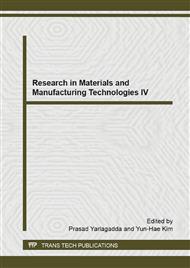[1]
N. Kiyoshi, et al., High reduction rolling technology on pair cross mill. Nippon Steel Technology Report No. 75, 1997: pp.9-23.
Google Scholar
[2]
V.B. Ginzburg and M. Azzam, Selection of optimum strip profile and flatness technology for rolling mills. Iron And Steel Engineering, 1997. 74: pp.30-37.
Google Scholar
[3]
V.B. Ginzburg, Roll crossing and shifting system. 1997, Danieli United, A Division of Danieli Corporation; intenational Rolling Mill Consultants, Inc. : USA. pp.1-18.
Google Scholar
[4]
Y. Miyai, R. Shimizu, and T. Kawasaki, Modernization and operation of NKK's Keihin hot strip mill. Iron and Steel Engineer, 1991. Nov: pp.35-40.
Google Scholar
[5]
Y. Qiulin and F. Kuan-Chen, Method for controlling axial shifting rolls. 1995, The University of Toledo: Canda. pp.1-17.
Google Scholar
[6]
Z.Y. Jiang, et al., strip shape analysis of asymmetrical cold rolling of thin strip. Advanced Material Research, 2010. 97-101: pp.81-84.
DOI: 10.4028/www.scientific.net/amr.97-101.81
Google Scholar
[7]
Z.Y. Jiang, D.B. Wei, and A.K. Tieu, Analysis of cold rolling of ultra thin strip. Journal of Materials Processing Technology, 2009. 209: pp.4584-4589.
DOI: 10.1016/j.jmatprotec.2008.10.035
Google Scholar
[8]
Z.Y. Jiang, H.T. Zhu, and A.K. Tieu, Analysis of asymmetrical rolling for cold rolling due to roll edge contact. Key Engineering Materials, 2004. 274-276: pp.715-720.
DOI: 10.4028/www.scientific.net/kem.274-276.715
Google Scholar
[9]
S. Omori, et al., Analysis of rolling load generated by pair crossed rolling mill. Ironmaking & Steelmaking, 2004. 31: pp.71-80.
DOI: 10.1179/030192304225012088
Google Scholar
[10]
M. Kitahama, et al., Profile Control of hot rolled strip by work roll shifting (K-WRS) mill. Iron and Steel Engineering, 1987: pp.34-42.
Google Scholar
[11]
A. Aljabri, et al., Thin strip profile control capability of roll crossing and shifting in cold rolling mill. Material Science Forum, 2013. 773-774: pp.70-78.
DOI: 10.4028/www.scientific.net/msf.773-774.70
Google Scholar
[12]
A. Aljabri, et al. Modeling of Thin Strip Profile during Cold Rolling on Roll Crossing and Shifting Mill. in PRICM: 8 Pacific Rim International Congress on Advanced Materials and Processing. 2013. Waikoloa, Hawaii, USA: John Wiley & Sons, Inc.
DOI: 10.1002/9781118792148.ch371
Google Scholar
[13]
Y. Zhang, et al., Analysis of cold-rolled strip profile in UCM mill by finite element method. Key Engineering Materials, 2010. 443: pp.21-26.
DOI: 10.4028/www.scientific.net/kem.443.21
Google Scholar
[14]
Z.Y. Jiang, et al., Modeling of strip shape during cold rolling of thin strip Key Engineering Materials, 2010. 443: pp.9-14.
DOI: 10.4028/www.scientific.net/kem.443.9
Google Scholar


